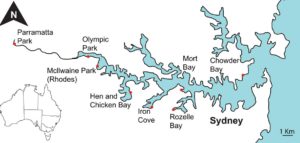 There are several good reasons not to be too concerned about the report that Sydney Harbour is awash with “aggressive infectious bacteria”.
There are several good reasons not to be too concerned about the report that Sydney Harbour is awash with “aggressive infectious bacteria”.
The first is that the story appears in the Sydney Morning Herald.
The second has to do with the source, the amusingly named UTS’ Climate Change Cluster, where many many topics are explored. The influence of preconception on the content of press releases is not one of them.
Finally, and here one can do no more than surmise, when you have been given large-ish ARC grants — a total of $1,073,905, to be precise — to take water samples at the sites above and explore the link between climate change and bacterial fecundity, there is a very good chance resulting coverage will focus on just such a link. This would seem to apply even if the boffin behind the study concedes there is not much cause for current concern. Here’s how the SMH reporter, a blonde, begins her tale of looming peril (emphasis added):
An aggressive species of marine bacteria responsible for many more deaths than sharks worldwide each year has been found in Sydney Harbour, with experts predicting outbreaks in spots along the city’s waterfront as water temperatures rise with global warming.
Vibrio bacteria, which includes the species that causes cholera, can cause serious illness in humans and animals, including gastrointestinal sickness through consumption of contaminated seafood and flesh-eating infections in swimmers.
Further down in the story we learn that no bugs of the cholera-causing variety were found, but why spoil an eye-catching headline? And then there is this from Professor Justin Seymour, who led the study (emphasis added):
“Given that these are naturally occurring marine organisms, it’s not surprising that we’re seeing them,” he said. “People don’t need to be super alarmed about their occurrence in Sydney Harbour at the moment. But what we’ve seen in other parts of the world are links between increasing seawater temperatures and the abundance of these bacteria and associated illnesses.
“I don’t think people should change the way they use their local beaches, but it is something local management authorities should be aware of. There are potentially harmful effects for humans if outbreaks of these bacteria in the environment become more severe and common.”
To summarise the fruits of $1.07 million in taxpayer funding:
- Marine organisms already known to exist in Sydney Harbour are still to be found in Sydney Harbour’s marine environment
- Bathers need not worry, nor should they change their habits
- Points 1 and 2 might no longer apply, just possibly, if the climate goes all Flannery, which so far it has steadfastly refused to do.
The feeble-minded — those who regard the SMH as a credible news source, in other words — can allay their anxieties by reading this and this. As those links note, but the SMH does not, where exposure to vibrio bugs has proven fatal, victims have had compromised immune systems.
Those keen to see their former fear of sharks restored to the chief concern when taking a dip can read the full fruit of Professor Seymour’s labours via the link below.
— roger franklin
 Sign In
Sign In 0 Items (
0 Items ( Search
Search








